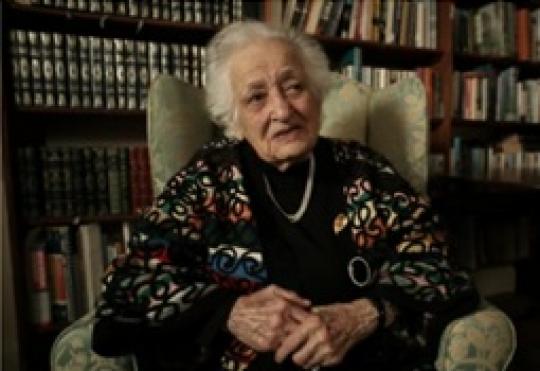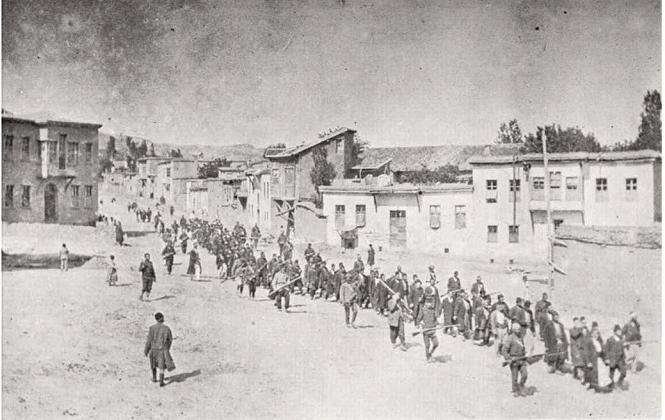24 April 1915: Deportation of Armenian Intellectuals
24 April 1915 is a symbolic date for commemorating the victims of the Ottoman Empire’s near total destruction of its Armenian population.

Astrid Aghajanian, who survived deportation to the Syrian Desert
This day saw the arrest of 235 leading members of Istanbul’s Armenian community – amongst them poets, doctors, religious leaders and political dissidents representing some of the most prominent Armenian intellectuals in the Ottoman Empire. Many of the 235 would be tortured and publicly executed in the months following their arrest.
Armenians within the Ottoman Empire already occupied a precarious position when the First World War broke out in 1914. Major pogroms during 1894-96, and again in 1909, had seen thousands massacred. After a number of military setbacks in the First World War, Ottoman leaders undertook measures to deport Armenian populations from their homes despite the vast majority not being located in areas of military activity.
The Armenians were deported along a number of routes to desert areas that could not sustain them. When the Armenian community of Van, a town in the southeast of Turkey, resisted attacks against them on 20 April 1915, Ottoman leaders decided to make deportations an empire-wide policy. The Armenians forced to undertake these death marches were deprived of food and water. Rapes and murders were routinely committed against those deported.
Satenig Ehranjian was an Armenian deported with her family from Erzurum in June 1915. The authorities had already taken her fiancé when she was forced from her home. After several days walking towards the desert, she was separated from her mother and sister. Her mother was too ill to continue on the torturous journey and her sister was abducted. As with her fiancé, Satenig never saw her mother or sister again.
Deportations like this occurred across the Ottoman Empire throughout 1915 and 1916. By the end of the First World War, Ottoman policies of expulsion and extermination had resulted in the deaths of an estimated 1.5 million Armenian men, women and children.
Adolf Hitler later referenced the systematic destruction of the Armenians as the Nazis planned the extermination of European Jews. Today, many communities across the world come together on 24 April to remember the victims of the Ottoman Empire’s campaign to annihilate its Armenian population.

